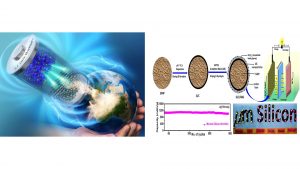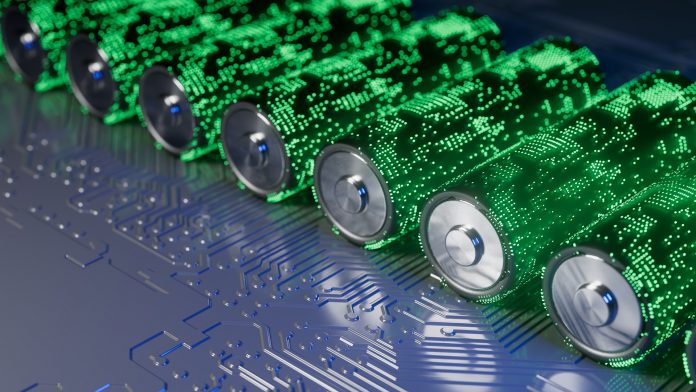A research team at the Japan Advanced Institute of Science and Technology (JAIST) has made a significant breakthrough toward increasing the performance of lithium-ion batteries.
The JAIST scientists have pioneered an innovative solution to a problem that has plagued the efficiency of silicon micronparticles (SiMP), synthesising highly resilient SiMPs comprised of black glasses (silicon oxycarbide) grafted silicon as an anode material. The discovery may increase the performance of lithium-ion batteries considerably, which will be crucial for achieving net zero ambitions.
The study is published in the Journal of Material Chemistry.
Harnessing the power of silicon
Silicon is the second most abundant element on Earth, making up 27.7% of the planet’s crust, and has the potential to make highly efficient metal ion batteries. As alternative energy storage devices such as lithium-ion batteries are becoming increasingly popular, the need to harness silicon’s excellent specific energy capacity as an electrode material is becoming essential.
However, utilising silicon-based electrode materials on a commercial scale is often hindered for two reasons. Firstly, the lack of mechanical stability caused by uncontrolled volume expansion upon lithiation – the process of combing silicon with a lithium-ion. And secondly, the rapid energy loss caused by unstable solid-electrode interface (SEI) formation.
Scientists have devised numerous advanced silicon-based negative electrodes or anode materials to mitigate these issues, with the most popular being silicon nanomaterials. Despite this, silicon nanomaterials still experience some shortcomings, such as a large demand and supply gap, difficult and expensive synthesis, and fast battery dry-up.
Professor Noriyoshi Matsumi, the leader of the research from JAIST, said: “Silicon nanoparticles might provide increased effective surface area, but that comes with its own drawbacks like increased consumption of electrolyte as well as poor initial coulombic efficiency after a few cycles of charging and discharging. SiMPs are the most appropriate, low-cost, and easily available alternatives, especially when combined with materials that have exceptional structural properties, such as silicon oxycarbide black glasses. Our material is not only high performing but also conducive to scale opportunities.”
Advancing lithium-ion batteries with SiMPs
The JAIST researchers developed a core-shell type material in which the core consisted of SiMP coated in a layer of carbon, with silicon oxycarbide black glasses then grafted on as the shell layer. The materials were subsequently utilised in an anodic half-cell configuration to analyse their ability to reversibly store lithium under different potential windows.

The results demonstrated that the material has an excellent lithium diffusion ability, reduced internal resistance, and overall volumetric expansion. The material displayed a 99.4% retention of energy capacity, even after 775 cycles of charging and discharging and showed great mechanical stability.
The study highlights the exciting potential of SiMP-based active anode materials, opening novel pathways for silicon in next-generation lithium-ion batteries. Moreover, this synthesis process can be easily scaled-up, meaning it could prove vital in producing energy storage for low-cost electric vehicles.
Professor Matsumi concluded: “Our methodology offers an effective avenue for the development of high-performance anode materials for energy-efficient lithium-ion batteries, which is an essential building block towards creating a sustainable and low-carbon tomorrow.”







